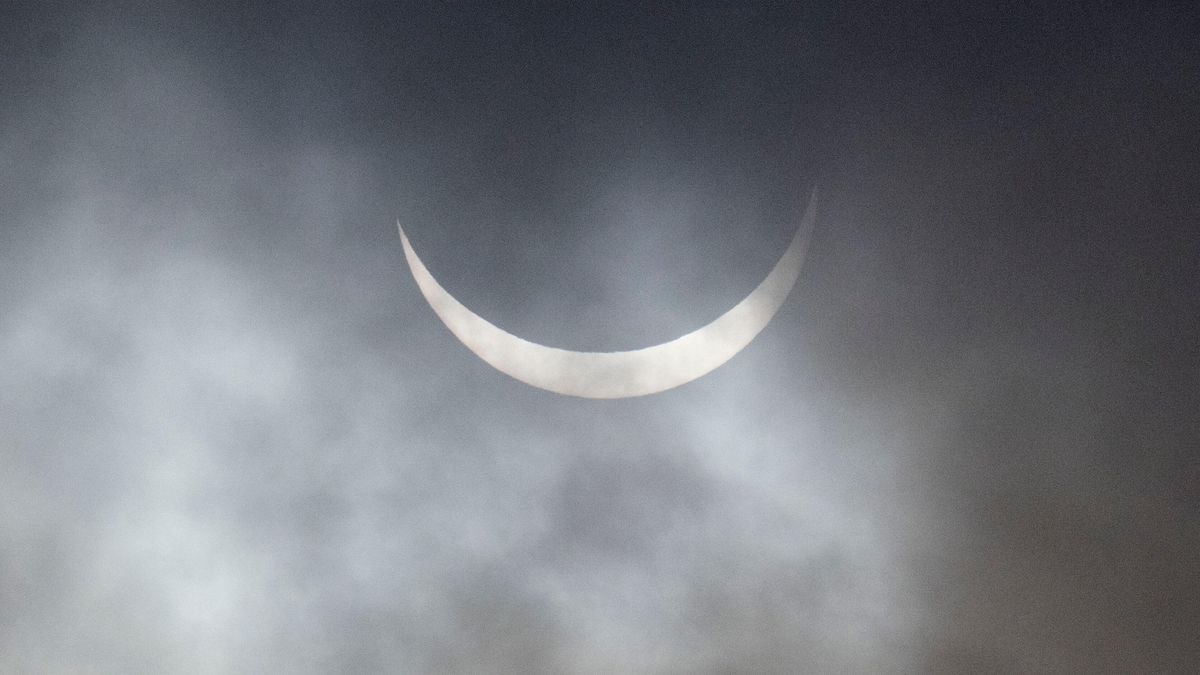On March 29, a partial solar eclipse swept across parts of the Northern Hemisphere. The edge of the moon’s shadow passed across Greenland, most of Europe, northern Asia, northwestern Africa and northeastern North America, including parts of 13 U.S. states.
A partial solar eclipse occurs when the moon passes between Earth and the sun but only partially covers the sun’s disk. Unlike in a total solar eclipse, the moon didn’t completely block out the sun this time, so observers needed equipment such as eclipse glasses or pinhole cameras to view the sun safely.
Because the eclipse happened at sunrise in North America, seeing the spectacle at its best depended on having a clear view of the eastern horizon and cloudless weather. In European time zones, the eclipse unfolded at midday, making it an easier viewing experience. Sungazers in Greenland and Europe captured these stunning images of the moon taking a “bite” out of the sun.
Nuuk, Greenland
The moon slowly traverses the sun behind a statue of Lutheran missionary Hans Egede in Nuuk, Greenland. Nuuk saw nearly 90% of the sun blacked out during the March 29 eclipse.
Rouans, France

Observers in Rouans, France, were treated to glimpses of the partial eclipse behind clouds around midday.
Brighton, England
The moon carves a bite out of the sun in Brighton, England.
Liverpool, England
Ghostly clouds obscure the sun in this eerie image of the partial eclipse behind the Liver Bird statue in Liverpool, England.
Nuuk, Greenland
A slim crescent of the sun peeks out from behind the moon above a home in Nuuk, Greenland.
Turnov, Czech Republic
Some areas, like the Czech town of Turnov, had their view of the eclipse completely obscured by clouds. Luckily, observers at the Turnov Observatory could watch livestreams of the eclipse on their phones.
Berlin, Germany
Viewers in Berlin, Germany caught the beginnings of the eclipse behind an overcast sky.
The next partial solar eclipse will be visible from parts of Australia and Antarctica on Sept. 21, 2025. Those who wish to experience totality should mark their calendars for Aug. 12, 2026, when a total solar eclipse will be visible in Greenland, Iceland, Spain and Russia, while other parts of Europe, as well as Africa and North America, will experience a partial eclipse that day.
